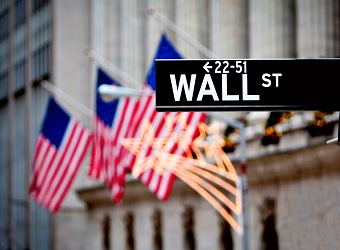U.S. stocks ended 2016 with a thud on Friday after all three major indexes closed the year with three straight days of losses for the first time since Nov. 4.
The Dow, S&P 500 and NASDAQ Composite all finished the year higher, however.
The market weakened further as traders speculated that a large number of orders to sell had been placed. Art Cashin, director of floor operations at UBS, said the selling orders totaled about $1.2 billion.
Still, investors were looking ahead to 2017. Kevin Mahn, president and chief investment officer at Hennion & Walsh Asset Management, said investors will be optimistic going into the new year, but it’s possible some of next year’s gains may have already been priced in to this year’s market.
“Coming out of 2016 with the wind at the backs of many investors and heading into 2017 with a recurring wave of confidence — with respect to economic growth or stock market growth in certain sectors of the U.S. — could lead into a very attractive year in 2017,” he said.
Mahn cautioned that any derailment in the Trump presidency — such as a delay or incapability to repeal Obamacare — could cause a pullback in the market.
“A lot of investors are being lulled with a false sense of comfort,” he said. “We could see some volatility early in the year if it appears that what everyone’s backed into the markets doesn’t happen soon.”
When asked if the new year would bring more profit-taking, Cashin was hesitant to say equities would continue to climb.
“Initially you would think a new year, a new month, there would be new money to be invested, but what’s happening down in Washington has thrown a bit of a curveball into this,” he said. “We’ll see how the hearings go for the nominees, how much of Mr. Trump’s policies do we think would be easily implemented … there will be some indecisiveness if they want to watch how the political fallout works.”
As of Thursday’s close, the Dow Jones industrial average was down 0.57 percent this week and is on pace for its first negative week since before the election. It continued to be up 13.74 percent year to date.
Meanwhile, all the S&P sectors turned negative after the S&P 500 ended Thursday down 0.03 percent, with the Financial Select Sector SPDR Fund as the biggest laggard, down nearly three quarters of a percent. The index was up 10.05 percent year to date.
As of Thursday’s close the biggest winners of the S&P 500 so far in 2016 have been energy [up 23.99 percent], financials [up 19.86 percent] and telecom [up 18.39 percent]. On the losing side of the S&P, health care lost the most [down 4.01 percent], followed by real estate [down 0.87 percent] and the consumer staples sector was up 3.06 percent, but lagged compared to the overall market.
The NASDAQ Composite ended Thursday down 0.12 percent, but was still up 8.48 percent for the year.
Looking ahead to 2017, David Schaffer, managing director of institutional equity sales at Raymond James, wrote in a note that among the top concerns for the new year are “random” Trump tweets, Russia’s increasing presence on the geopolitical stage, drug pricing, aging infrastructure and software security breaches.
For the final data report of 2016, the Chicago Purchasing Manager’s Index for December came in at 54.6, lower than consensus forecasts of 56.8. This month’s figure is also down from November’s reading of 57.6. Looking back, 2016 began with a reading of 55.6 in January.
The U.S. dollar index was trading around 102.22, but hit a low of 101.92 — its lowest level in more than 2 weeks — overnight after a brief surge in the euro.
Meanwhile in oil, U.S. benchmark West Texas intermediate (WTI) crude futures settled down 5 cents at $53.72. WTI has gained 45 percent since January for its best year since 2009.
The bond market closed at 2 p.m. ET on Friday, while the stock market maintained normal hours. Treasury yields were mostly lower on Friday. The yield on the benchmark 10-year Treasury note ended the year at 2.446 percent, up from its Dec. 31, 2015 close of 2.275 percent. Meanwhile, the 2-year yield was at 1.198 percent after ending 2015 at 1.064 percent.
Source: CNBC


